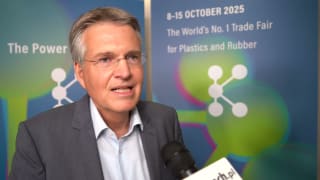 Lanxess has inaugurated the new headquarters of its Keltan Elastomers business unit in Sittard-Geleen in the Netherlands. With immediate effect the company is managing its global business for ethylene-propylene-diene monomer high-performance rubber (EPDM rubber), marketed under the Keltan brand, from the modern complex of buildings on the Chemelot Campus.
Lanxess has inaugurated the new headquarters of its Keltan Elastomers business unit in Sittard-Geleen in the Netherlands. With immediate effect the company is managing its global business for ethylene-propylene-diene monomer high-performance rubber (EPDM rubber), marketed under the Keltan brand, from the modern complex of buildings on the Chemelot Campus.Lanxess is investing EUR 12 million in the Dutch site to convert 50 percent of its EPDM production capacity to the innovative Keltan ACE technology. With ACE (Advanced Catalyst Elastomers) the amount of energy required for the production process can be significantly reduced compared to conventional technologies. The process also makes new types of EPDM possible. The expansion is proceeding on schedule and is expected to be completed by the middle of the year.
For the new headquarters of the Keltan Elastomers business unit, offices, research labs, exhibition areas and conference rooms were constructed across a total area of 3,500 m2 and will be occupied by approximately 125 employees. Emphasis was placed on sustainable solutions in the architecture and the selection of materials. To conserve energy, for example, major portions of the lighting systems are controlled by motion sensors. The floor coverings are manufactured from a special, easily recyclable material. The handles on all the drawers in the building are also made of Keltan Eco, LANXESS' bio-based EPDM rubber. The large-scale use of glass demonstrates LANXESS' commitment to transparency in the truest sense of the word. The light-filled offices and short distances also promote communication among employees along with a general sense of well-being.
The EPDM rubber produced in Sittard-Geleen is used mainly in the automotive industry, as well as in the construction sector and in industrial and electronic articles. In vehicles, the synthetic rubber - which is characterized primarily by its resistance to heat, oxidation, chemicals and weathering, as well as good insulation properties - is used for everything from seals in auto bodies to coolant hoses under the hood.
###
In the construction sector, EPDM rubber is also used primarily as a sealing material - in profile seals for windows and doors, as a material to seal joints, for rubber sheets to cover flat roofs or in gaskets for roof structures made of plastic sheeting. EPDM is also integral in the home: for example, the gaskets on washing machines, bathroom fixtures and garden hoses are fabricated from high-performance rubber.
The LANXESS Keltan Elastomers business unit employs a total of approximately 700 people at its sites in the Netherlands, Germany, Brazil and the United States. Some 270 of them are based in Sittard-Geleen.
The company is currently investing EUR 235 million in the construction of the world's largest plant for the production of EPDM rubber in Changzhou, China. The plant is scheduled to begin operation in 2015, after which this plant alone will manufacture 160,000 metric tons of EPDM high-performance rubber annually. The project will create up to 200 new jobs.
Since late 2011 LANXESS has been producing Keltan Eco, the world's first bio-based EPDM rubber, from its Brazilian site in Triunfo. LANXESS accomplishes that by using ethylene produced entirely from the renewable raw material sugar cane. The company is therefore one of the first to respond to the growing demand for sustainably produced synthetic rubber and is also contributing to a reduction of CO2 emissions.
The Keltan Elastomers business unit belongs to the LANXESS Performance Polymers segment, which achieved total sales of EUR 5.2 billion in fiscal 2012.



